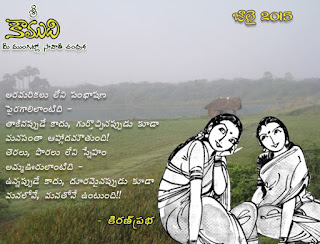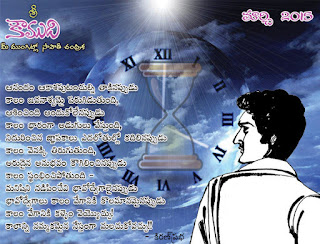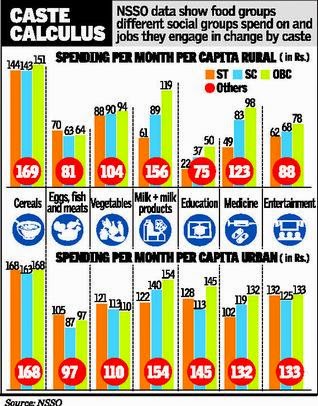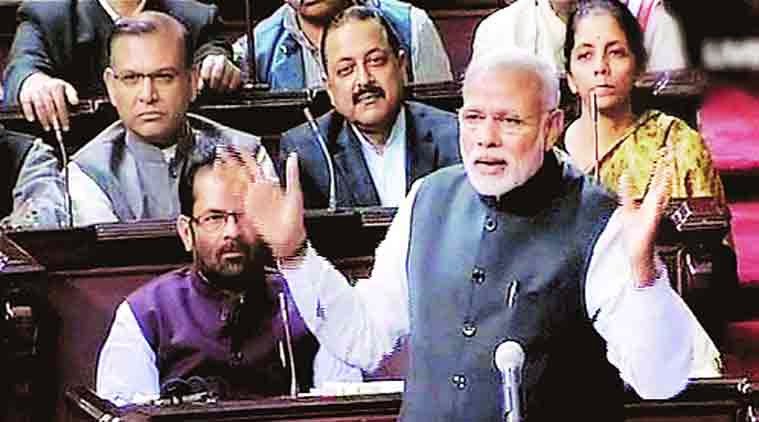T. C. A. Sharad Raghavan
Literacy, second most common form of deprivation.
Nearly 19 per cent of India’s rural population in 2011 lacked at least one of seven socio-economic parameters used to estimate deprivation that include source of income, the presence of an able and literate adult and quality dwelling.
The first socio-economic and caste census in India since 1934, the Socio Economic and Caste Census 2011 (SECC), was released here on Friday by Union Finance Minister Arun Jaitley.
Among the crucial findings of the exercise, conducted by the Ministry of Rural Development, was that about 30 per cent of rural households are landless and derive a major part of their income from manual, casual labour. The second most common form of deprivation was literacy with close to a quarter – 23.5 per cent — of rural households having no literate adults above the age of 25.
Releasing the census, Mr Jaitley said the findings would form the basis for States and the Centre to take policy decisions on schemes and programmes. “It provides a basis for helping to target groups for support and for policy planning,” he added.
However, the data released on Friday pertained only to the socio-economic parameters of the SECC 2011. The detailed caste-based data that will include figures for the Other Backward Classes will be placed before Parliament.
“Although it is called the Socio Economic and Caste data, the release so far has been of only the socio-economic data. The detailed caste-based data has not yet been released. However, Parliament has asked for this data, and so it will be placed before them at some point. At that point, it will be made public," said National Statistical Commission Chairman Pronab Sen.
Deprivation, not income
The extent of and approach to deprivation captured by the SECC 2011 contrasts with the poverty estimates of the erstwhile Planning Commission, which were income-based. As per the Commission’s last estimate, in 2011-12, 25.7 per cent of India’s rural population was below the poverty line ie. with an income below Rs. 816 per capita per month.
Dr Sen, told The Hindu that the poverty estimates of the Planning Commission and the SECC were not comparable. “This census measures deprivation on the basis of what a household does not have as against the Planning Commission’s poverty estimates that looked at the income an individual does have,” he said.
Source: thehindu
Literacy, second most common form of deprivation.
Nearly 19 per cent of India’s rural population in 2011 lacked at least one of seven socio-economic parameters used to estimate deprivation that include source of income, the presence of an able and literate adult and quality dwelling.
The first socio-economic and caste census in India since 1934, the Socio Economic and Caste Census 2011 (SECC), was released here on Friday by Union Finance Minister Arun Jaitley.
Among the crucial findings of the exercise, conducted by the Ministry of Rural Development, was that about 30 per cent of rural households are landless and derive a major part of their income from manual, casual labour. The second most common form of deprivation was literacy with close to a quarter – 23.5 per cent — of rural households having no literate adults above the age of 25.
Releasing the census, Mr Jaitley said the findings would form the basis for States and the Centre to take policy decisions on schemes and programmes. “It provides a basis for helping to target groups for support and for policy planning,” he added.
However, the data released on Friday pertained only to the socio-economic parameters of the SECC 2011. The detailed caste-based data that will include figures for the Other Backward Classes will be placed before Parliament.
“Although it is called the Socio Economic and Caste data, the release so far has been of only the socio-economic data. The detailed caste-based data has not yet been released. However, Parliament has asked for this data, and so it will be placed before them at some point. At that point, it will be made public," said National Statistical Commission Chairman Pronab Sen.
Deprivation, not income
The extent of and approach to deprivation captured by the SECC 2011 contrasts with the poverty estimates of the erstwhile Planning Commission, which were income-based. As per the Commission’s last estimate, in 2011-12, 25.7 per cent of India’s rural population was below the poverty line ie. with an income below Rs. 816 per capita per month.
Dr Sen, told The Hindu that the poverty estimates of the Planning Commission and the SECC were not comparable. “This census measures deprivation on the basis of what a household does not have as against the Planning Commission’s poverty estimates that looked at the income an individual does have,” he said.
Source: thehindu

























